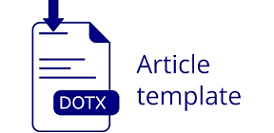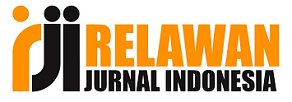Mengoptimalkan Pendidikan dengan Sumber Daya Terbatas
Tantangan Mengajar di Sekolah Dasar
DOI:
https://doi.org/10.30762/najwa.v3i1.359Keywords:
Motivation, Community Service Program, Developing student, English learningAbstract
This study explores the contribution of a community service team in the education sector through the Community-Based Learning Program (KKN) at SD Negeri 3 Tampa, East Barito, Indonesia. The program aimed to enhance students’ focus, motivation, and English language proficiency in response to ongoing challenges, including a shortage of qualified educators and limited learning resources. Adopting a social approach, the implementation involved systematic observation, problem identification, strategic planning, and execution by students from the University of Palangka Raya. The results indicate a significant improvement in students’ motivation and English skills, particularly in speaking and comprehension. Key program components included English teacher assistance, innovative learning methods, and motivation and awareness enhancement. Feedback from both students and teachers highlighted increased student engagement and positive learning outcomes. Despite these achievements, sustained development efforts and institutional support remain essential to ensure long-term impact.
Downloads
References
Alam, A. (2021). Possibilities and Apprehensions in the Landscape of Artificial Intelligence in Education. 2021 International Conference on Computational Intelligence and Computing Applications (ICCICA), 1–8. https://doi.org/10.1109/ICCICA52458.2021.9697272
Alhazmi, A. A., & Kaufmann, A. (2022). Phenomenological Qualitative Methods Applied to the Analysis of Cross-Cultural Experience in Novel Educational Social Contexts. Frontiers in Psychology, 13. https://doi.org/10.3389/fpsyg.2022.785134
Amri, A., Lassa, J. A., Tebe, Y., Hanifa, N. R., Kumar, J., & Sagala, S. (2022). Pathways to Disaster Risk Reduction Education integration in schools: Insights from SPAB evaluation in Indonesia. International Journal of Disaster Risk Reduction, 73, 102860. https://doi.org/10.1016/j.ijdrr.2022.102860
Baety, N. (2021). INDONESIAN TEACHER PERFORMANCE: Professional and Character. AKADEMIK: Jurnal Mahasiswa Humanis, 1(3), Article 3. https://doi.org/10.37481/jmh.v1i3.459
Belva Saskia Permana, Lutvia Ainun Hazizah, & Yusuf Tri Herlambang. (2024). Teknologi Pendidikan: Efektivitas Penggunaan Media Pembelajaran Berbasis Teknologi Di Era Digitalisasi. Khatulistiwa: Jurnal Pendidikan dan Sosial Humaniora, 4(1), 19–28. https://doi.org/10.55606/khatulistiwa.v4i1.2702
Christopoulos, A., & and Sprangers, P. (2021). Integration of educational technology during the Covid-19 pandemic: An analysis of teacher and student receptions. Cogent Education, 8(1), 1964690. https://doi.org/10.1080/2331186X.2021.1964690
Creswell, J. W. (2013). Qualitative Inquiry and Research Design: Choosing Among Five Approaches. SAGE.
Cynthia, R. E., & Sihotang, H. (2023). Melangkah Bersama di Era Digital: Pentingnya Literasi Digital untuk Meningkatkan Kemampuan Berpikir Kritis dan Kemampuan Pemecahan Masalah Peserta Didik. Jurnal Pendidikan Tambusai, 7(3), 31712–31723.
Eli, T. (2021). Students` Perspectives on the Use of Innovative and Interactive Teaching Methods at the University of Nouakchott Al Aasriya, Mauritania: English Department as a Case Study. International Journal of Technology Innovation and Management (IJTIM), 1(2), Article 2. https://doi.org/10.54489/ijtim.v1i2.21
Eraut, M. (2009). Transfer of knowledge between education and workplace settings. In Knowledge, Values and Educational Policy. Routledge.
Haderani, H. (2018). Tinjauan Filosofis tentang Fungsi Pendidikan dalam Hidup Manusia. Jurnal Tarbiyah : Jurnal Ilmiah Kependidikan, 7(1). https://doi.org/10.18592/tarbiyah.v7i1.2103
Hidayat, A., Sa’diyah, M., & Lisnawati, S. (2020). METODE PEMBELAJARAN AKTIF DAN KREATIF PADA MADRASAH DINIYAH TAKMILIYAH DI KOTA BOGOR. Edukasi Islami: Jurnal Pendidikan Islam, 09(1). https://doi.org/10.30868/ei.v9i01.639
Hwang, W.-Y., Hoang, A., & Lin, Y.-H. (2021). Smart mechanisms and their influence on geometry learning of elementary school students in authentic contexts. Journal of Computer Assisted Learning, 37(5), 1441–1454. https://doi.org/10.1111/jcal.12584
Jarilkapovich, M. A. (2025). Program Technology for Choosing an Effective Educational Methodology Based on Modern Pedagogical Research in The Educational System. CURRENT RESEARCH JOURNAL OF PEDAGOGICS, 6(02), Article 02. https://doi.org/10.37547/pedagogics-crjp-06-02-06
Kelsh, D., & Hill, D. (2024). The Culturalization of Class and the Occluding of Class Consciousness: The Knowledge Industry in/of Education. In Class, Race and Education under Neoliberal Capitalism. Routledge.
Li, J., & Xue, E. (2023). Dynamic Interaction between Student Learning Behaviour and Learning Environment: Meta-Analysis of Student Engagement and Its Influencing Factors. Behavioral Sciences, 13(1), Article 1. https://doi.org/10.3390/bs13010059
Madjid, A., & Pare-pare, I. (2019). KOMPETENSI PROFESIONAL GURU: KETERAMPILAN DASAR MENGAJAR. Journal Peqguruang: Conference Series, 1(2). http://dx.doi.org/10.35329/jp.v1i2.327
Nodirabonu, J., & Qizi, K. I. B. (2023). HOW TO MAKE CREATIVE TEACHING ATMOSPHERE IN THE CLASSROOM. International Conference on Multidisciplinary Science, 1(6), Article 6.
Okoye, K., Rodriguez-Tort, J. A., Escamilla, J., & Hosseini, S. (2021). Technology-mediated teaching and learning process: A conceptual study of educators’ response amidst the Covid-19 pandemic. Education and Information Technologies, 26(6), 7225–7257. https://doi.org/10.1007/s10639-021-10527-x
Primayana, K. H., & Dewi, P. Y. A. (2021). MANAJEMEN PENDIDIKAN DALAM MODERASI BERAGAMA DI ERA DISRUPSI DIGITAL. 19. https://doi.org/10.33363/tampung-penyang.v19i1.695
Qureshi, M. I., Khan, N., Raza, H., Imran, A., Ismail, F., & BiS, U. (2021). Digital Technologies in Education 4.0. Does it Enhance the Effectiveness of Learning? http://localhost/jspui/handle/123456789/25661
Sailer, M., Schultz-Pernice, F., & Fischer, F. (2021). Contextual facilitators for learning activities involving technology in higher education: The C♭-model. Computers in Human Behavior, 121, 106794. https://doi.org/10.1016/j.chb.2021.106794
Sosas, R. V. (2021). Technology in teaching speaking and its effects to students learning English. Journal of Language and Linguistic Studies, 17(2), 958–970. https://doi.org/10.3316/informit.216416293600311
Souto-Otero, M. (2021). Validation of non-formal and informal learning in formal education: Covert and overt. European Journal of Education, 56(3), 365–379. https://doi.org/10.1111/ejed.12464
Sri Astuti, D.-, Astriyanti, D.-, Hafis, M.-, Syahadati, E.-, Irwan, D.-, -, S.-, -, A.-, Anita, F.-, Putra, M. I. R., Kusumaningsih, C.-, Sari, D. S., Kurniawati, T.-, Darajat, A.-, Arif, A.-, Firdaus, M.-, & Dayat, D. (2023). Pendampingan dan Peningkatan Keterampilan Bahasa Inggris pada Peserta Didik Rumah Pintar Desa Punggur Kecil. GERVASI: Jurnal Pengabdian kepada Masyarakat, 7(3), 1285–1297. https://doi.org/10.31571/gervasi.v7i3.4748
Sugiarta, I. M., Mardana, I. B. P., Adiarta, A., & Artanayasa, W. (2019). FILSAFAT PENDIDIKAN KI HAJAR DEWANTARA (TOKOH TIMUR). Jurnal Filsafat Indonesia, 2(3), 124–136. https://doi.org/10.23887/jfi.v2i3.22187
Widyanto, N. (2023). SUPERVISI PENDIDIKAN DALAM PENINGKATAN PROFESIONALISME GURU SD DI KABUPATEN KUTAI KARTANEGARA. Jurnal Pendas Mahakam, 8(2). https://repository.uinsi.ac.id/handle/123456789/4225
Zeinstra, L., Kupers, E., Loopers, J., & de Boer, A. (2023). Real-time teacher-student interactions: The dynamic interplay between need supportive teaching and student engagement over the course of one school year. Teaching and Teacher Education, 121, 103906. https://doi.org/10.1016/j.tate.2022.103906
Downloads
Published
How to Cite
Issue
Section
License
Copyright (c) 2025 Kurnia, Cecilia Putri Utami, Khoirunnisa Durotul Hikmah, Joni Tito Kaharap, Heri Setiawan, Reni Agustiani

This work is licensed under a Creative Commons Attribution 4.0 International License.






